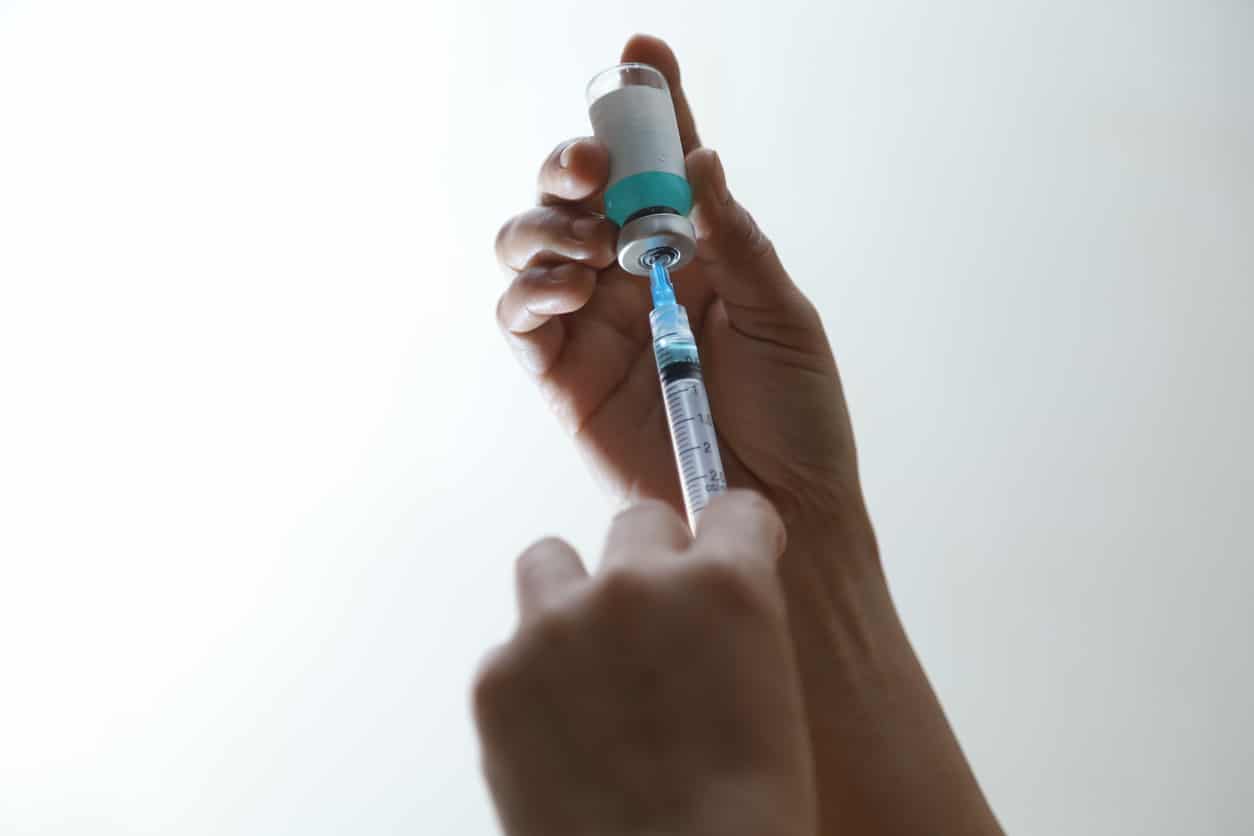Testosterone replacement therapy (TRT) offers several administration methods beyond just the standard injections for men diagnosed with low T levels. Whether you’re experiencing symptoms of testosterone deficiency like decreased libido, fatigue, or reduced muscle mass, or have confirmed low levels, understanding all available treatment options helps you make informed decisions about your health.
What is Low Testosterone and How Does it Affect Men?
Testosterone is the primary male hormone produced in the testes, drives masculine development, and maintains overall health throughout a man’s life. When natural testosterone production declines below normal levels, a condition known as testosterone deficiency or male hypogonadism develops (Cleveland Clinic).
Low testosterone occurs when the body stops making testosterone or produces reduced levels as a result of age or injury to the testes, pituitary gland, or hypothalamus. The sex organs may not function as testosterone production decreases, leading to both physical and psychological symptoms that can progressively worsen without proper medical intervention. Symptoms of testosterone deficiency can manifest as:
- Decreased libido (sex drive), fewer spontaneous erections, or erectile dysfunction (ED)
- Persistent fatigue, irritability, depression, and reduced motivation or drive
- Decreased muscle mass and strength coupled with increased body fat and struggles with weight loss
- Difficulty concentrating, memory issues, and “brain fog”
- Development or worsening of sleep apnea and insomnia
- Increased risk for metabolic syndrome and insulin resistance
- Reduced bone density potentially leading to osteoporosis and increased fracture risk
- Chest pain, heart disease, and coronary artery disease
Identifying testosterone deficiency requires an evaluation by a healthcare provider. Healthcare professionals perform blood tests to verify if testosterone levels are within the normal range, which is between 300 ng/dL and 1000 ng/dL.
If you’re experiencing symptoms associated with low testosterone, such as delayed puberty in younger males or changes in energy, mood, or sexual function in adult men, consult with a medical professional to get a proper diagnosis and potential testosterone treatment.

Understanding Testosterone Therapy Options
Testosterone replacement therapy (TRT) is a medical treatment designed to restore normal testosterone levels in men with clinically diagnosed low T. TRT involves administering synthetic testosterone to bring hormone levels back within the normal range, alleviating symptoms and improving quality of life (Cleveland Clinic). Available testosterone treatment options include:
- Testosterone injections: Administered into muscle tissue or via subcutaneous route, testosterone enanthate and testosterone cypionate provide reliable dosing and cost-effective treatment. Injections require administration every 1-2 weeks, depending on the formulation (National Library of Medicine).
- Testosterone gel: Applied daily to clean, dry skin (such as shoulders, upper arms, or abdomen). This topical treatment provides steady testosterone levels throughout the day. Gel formulations avoid the “peaks and valleys” of injectable options but require consistent daily application, and you may have to avoid contact to prevent cross-contamination.
- Testosterone patches: Worn on the skin and replaced daily, patches deliver a controlled amount of testosterone through the skin into the bloodstream. This option provides convenience and prevents the drawbacks of gels, but may cause skin reactions in some patients.
- Oral testosterone: Testosterone undecanoate is an oral formulation that bypasses first-pass liver metabolism. This option provides convenience but may require multiple daily doses and carries potential concerns about liver effects (National Library of Medicine).
- Buccal system: Applied to the gums above the incisors, this system allows testosterone to be absorbed directly into the bloodstream. This less common option avoids liver processing but can cause gum irritation (Mayo Clinic).
- Subcutaneous pellets: Implanted under the skin, these rice-sized pellets slowly release testosterone over 3-6 months. This option offers convenience with fewer treatments but requires a minor procedure for implantation.
Each testosterone administration method has its unique benefits and drawbacks that you must consider alongside individual health needs and preferences. Your healthcare provider will help determine which option aligns best with your lifestyle, medical conditions, and treatment goals.
Benefits of Testosterone Therapy
For men suffering from clinical testosterone deficiency, testosterone replacement therapy (TRT) can provide significant relief from troublesome symptoms. When properly administered and monitored by a healthcare provider, TRT offers several benefits that dramatically improve your quality of life, such as:
- Increased Energy Levels
- Enhanced Sex Drive
- Improved Erectile Function
- Increased Muscle Mass
- Better Bone Health
- Enhanced Mood
- Improved Body Composition
- Better Metabolic Function
- Sharper Cognitive Function
The benefits of testosterone therapy develop gradually, with some improvements noticeable within weeks, while others take several months to materialize. When used appropriately for clinically diagnosed low testosterone, TRT significantly improves daily functioning and restores a man’s sense of well-being and youthful vitality.
Risks and Side Effects of Testosterone Therapy
While testosterone therapy offers significant benefits for men with clinically diagnosed low testosterone, it’s important to know that there are potential risks and side effects associated with treatment. Like any medical intervention, TRT requires careful consideration of both benefits and potential drawbacks with your healthcare provider (Mayo Clinic). You could experience:
- Increased risk of heart attack, stroke, coronary artery disease, and cardiovascular events.
- Blood clots and pulmonary embolism
- Prostate health issues
- Elevated red blood cell count
- Sleep apnea
- Breast tenderness/growth
- Acne, oily skin, and other skin issues
- Reduces sperm production and fertility
- Mood swings, irritability, or increased aggression
- Interactions with other medications, like blood thinners and diabetes medication
Understanding these risks allows you to make an informed decision about testosterone replacement therapy. Schedule an appointment with Huddle Men’s Health today to speak with specialists who can provide personalized guidance on whether TRT is appropriate for your specific situation.
Choosing the Right Testosterone Therapy Option
The choice of testosterone therapy option depends on individual needs, preferences, and specific health circumstances. Factors to consider include symptom severity, medical history, lifestyle factors, and your comfort with different administration methods.
A qualified healthcare provider experienced in treating testosterone deficiency will determine the most appropriate course of treatment for your unique situation. You should initiate TRT under proper medical supervision and undergo regular follow-up appointments to monitor effectiveness and potential side effects.
What to Expect from Testosterone Replacement
Testosterone replacement therapy is a commitment that requires both patience and consistency to achieve optimal results. The timeline and monitoring requirements differ depending on each person, but here is a set of realistic expectations as you undertake your TRT journey:
- Initial adjustment period (1-3 weeks): Some men report early improvements in mood and energy, but most significant benefits take longer to develop.
- Early Changes (1-3 months): Sexual function and libido often improve first, along with initial changes in energy levels and mood.
- Progressive improvements (3-6 months): Body composition changes begin to appear with increases in muscle mass and decreases in body fat.
- Full benefits (6-12 months): Bone density improvements, maximum muscle development, and metabolic changes typically require longer treatment periods.
- Ongoing monitoring: Regular blood tests track normal testosterone levels, complete blood count, liver function, and prostate-specific antigens.
- Dose adjustments: Your provider may modify your treatment protocol based on your response and lab test results.
- Managing side effects: Medical providers will address any adverse effects through dose adjustments or additional treatments.
Testosterone therapy is not a quick fix but rather a long-term treatment approach for a chronic condition. Maintaining realistic expectations and committing to regular monitoring will help ensure both the safety and effectiveness of your treatment.
Is Testosterone Therapy Safe?
Testosterone therapy is generally safe when used appropriately under the guidance of a knowledgeable healthcare provider. However, it’s crucial to understand that TRT is not without risks, including potential cardiovascular effects, impacts on prostate health, and changes in blood parameters that require oversight.
Men with a history of heart disease, stroke, uncontrolled high blood pressure, sleep apnea, liver disease, kidney disease, or certain types of cancer should be particularly cautious about testosterone supplementation (National Library of Medicine). Regular lab tests, including testosterone levels, complete blood count, and prostate-specific antigen (PSA) testing, are components of safe testosterone therapy.

Finding a Qualified Healthcare Provider for TRT
The right medical professional to oversee your testosterone replacement therapy ensures both safety and treatment success. A qualified provider will offer comprehensive evaluation, personalized treatment approaches, and ongoing support throughout your TRT journey. These steps help you identify the right provider for your unique needs:
- Seek specialists: Look for physicians with specific training and experience in hormone replacement therapy and men’s health.
- Verify comprehensive evaluation: Ensure the provider performs thorough diagnostic testing beyond just a single testosterone measurement.
- Ask about treatment philosophy: Find a provider who treats the whole patient, not just the numbers on lab tests.
- Discuss monitoring protocols: Quality providers will insist on regular follow-up appointments and comprehensive lab work.
- Confirm communication style: Choose someone who listens to your concerns and explains concepts clearly.
- Check treatment options: The best providers offer multiple testosterone delivery methods rather than a one-size-fits-all approach.
- Inquire about support systems: Determine what resources are available between appointments if questions or concerns arise.
A qualified healthcare provider will be a partner in your health journey, offering expertise and guidance every step of the way. Huddle Men’s Health specializes in testosterone replacement therapy with a team of experienced providers who can help determine if TRT is right for you.
Getting Started with Testosterone Therapy
Testosterone replacement therapy involves several important steps to ensure you receive the most appropriate and effective treatment for your specific situation. Taking the time to prepare for TRT properly will help maximize benefits while minimizing potential risks. Here’s how to get started:
- Provide a complete medical history: Share all relevant medical conditions, medications, and previous treatments with your healthcare provider.
- Discuss your symptoms timeline: Detail when your symptoms began, their severity, and how they impact your daily life.
- Undergo comprehensive blood testing: Initial labs typically include total and free testosterone, estradiol, complete blood count, liver function, and prostate-specific antigen.
- Get a physical examination: Expect a thorough exam that includes vital signs, body composition assessment, and prostate examination.
- Review treatment options: Discuss the various testosterone administration methods and which might best suit your lifestyle and needs.
- Understand the protocol: Get clear instructions on administration, timing, and any special considerations for your chosen therapy.
- Schedule regular follow-ups: Mark your calendar for all recommended testing and appointments to ensure proper monitoring.
The initial evaluation process typically takes 1-2 visits before treatment begins to ensure the provider has all necessary information. Committing to this initial process and following your personalized treatment plan will give you the best chance for successful TRT.
Conclusion
Testosterone replacement therapy provides an effective solution for men suffering from clinically diagnosed low testosterone, with various methods available to suit individual preferences and lifestyles, not just injections. When properly prescribed and monitored by a quality healthcare provider, TRT can improve quality of life by addressing symptoms like fatigue, low sex drive, and decreased muscle mass.
At Huddle Men’s Health, our experienced team specializes in comprehensive testosterone therapy solutions tailored to your unique needs and circumstances. Contact us today to schedule a consultation and discover if testosterone replacement therapy is the right approach for addressing your symptoms and improving your overall health and vitality.
FAQs
Is TRT injectable?
Yes, testosterone replacement therapy (TRT) is available through injections, gels, or patches. Injectable testosterone is one of the most common and effective TRT methods, offering steady hormone levels.
What types of injectable testosterone are available?
Common types of injectable testosterone include testosterone enanthate, testosterone cypionate, and testosterone undecanoate. Each has different dosage schedules and absorption rates.
Are testosterone injections better than gels or patches?
Testosterone injections provide longer-lasting effects and more consistent hormone levels compared to gels or patches, which require daily application and may cause skin irritation.
How often do I need to take testosterone injections?
Most testosterone injections are administered weekly or biweekly, depending on the type of testosterone used and your doctor’s recommendations. Long-acting formulations may require less frequent dosing.
Are testosterone injections safe?
When monitored by a doctor, testosterone injections are generally safe. However, potential side effects include increased red blood cell count, acne, mood changes, and cardiovascular risks. Regular blood tests help ensure safe treatment.




